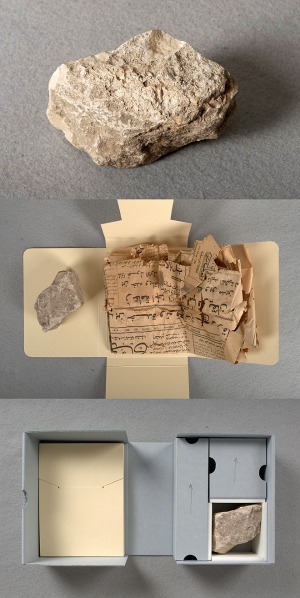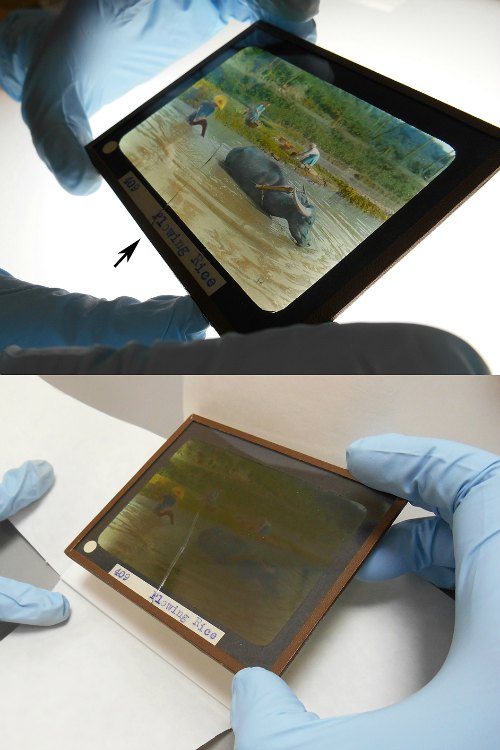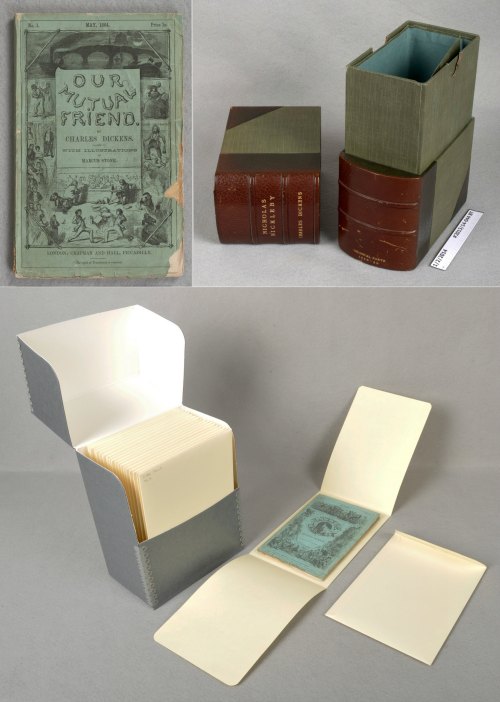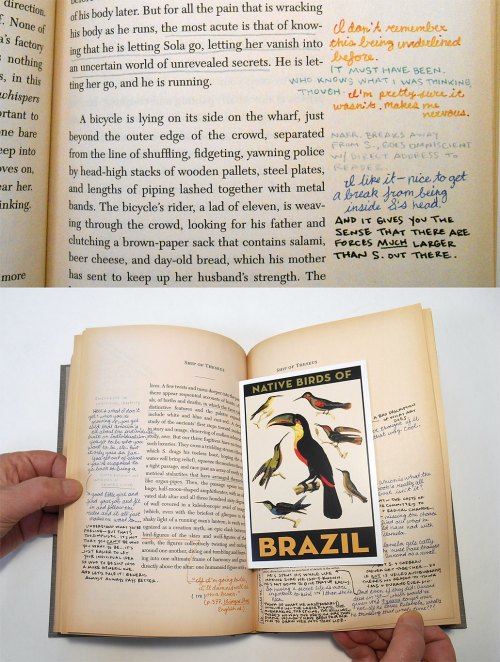 Some of our recent interesting conservation projects have involved housing. Not only do we repair damaged books and paper items in the conservation lab, but we also make many boxes and enclosures to house them, and occasionally our box-making expertise is called upon for rather unusual items.
Some of our recent interesting conservation projects have involved housing. Not only do we repair damaged books and paper items in the conservation lab, but we also make many boxes and enclosures to house them, and occasionally our box-making expertise is called upon for rather unusual items.
For example, from the Abraham Joshua Heschel Papers: a rock. Little is known about this small piece of rock except that it is a souvenir of a trip that Heschel made to Israel. The rock was originally wrapped in a newspaper. Tedd Anderson made a four-flap enclosure for the newspaper and a box to house both the rock and the newspaper enclosure.
Rachel Penniman has been working on a set of Charles Dickens’s publications, the original short segments of his novels that came out in serial form. These serials had been housed in custom boxes that someone must have made for their personal collection. Although the boxes were attractive with leather spines and stamped titles, they were not safe for the serials. The boxes caused creases and abrasions each time one of the pamphlets was removed or reinserted. Rachel made individual enclosures for each serial issue, and the enclosures were housed together in larger boxes, one for each title. Access to the serials is now much easier and safer.
The Digital Production Center (DPC) is in the process of scanning glass lantern slides of scenes of daily life in China made by Sidney Gamble in the early 20th century. Many of the slides are hand-colored, some have existing cracks, and all are very fragile because of the glass support. Erin Hammeke has been working to stabilize their housings. Each slide is housed in a labeled four-flap paper wrapper, and in the case of cracked slides, she adds a piece of mat board as an extra stiffener.
The conservation department creates housings for circulating collections as well. Mary Yordy has an upcoming housing project for the fascinating new book S by J.J. Abrams and Doug Dorst. The book is beautifully made to look old and well used with notes in the margins and numerous loose paper inserts. Mary is planning to make a box for the book that will prevent loose materials from falling out and getting lost, and the book will be kept in the locked stacks. While we chose to leave the inserts untreated and as published, the Preservation Lab at the Public Library of Cincinnati/University of Cincinnati decided on another route with this title.
More images of these and other housing projects can be seen on Flickr.
Post contributed by Grace White, Conservator for Special Collections, as part of our ongoing “In the Conservation Lab” series.





